I saw it looming in the distance, shrouded by dust swirling in the white harmattan sky. It grew closer and then flashed past. A huge domed cathedral rising from the flat bleak landscape: it’s one of the stranger things I’ve seen out the window of a bus in West Africa (and I’ve seen a lot of pretty strange things here).
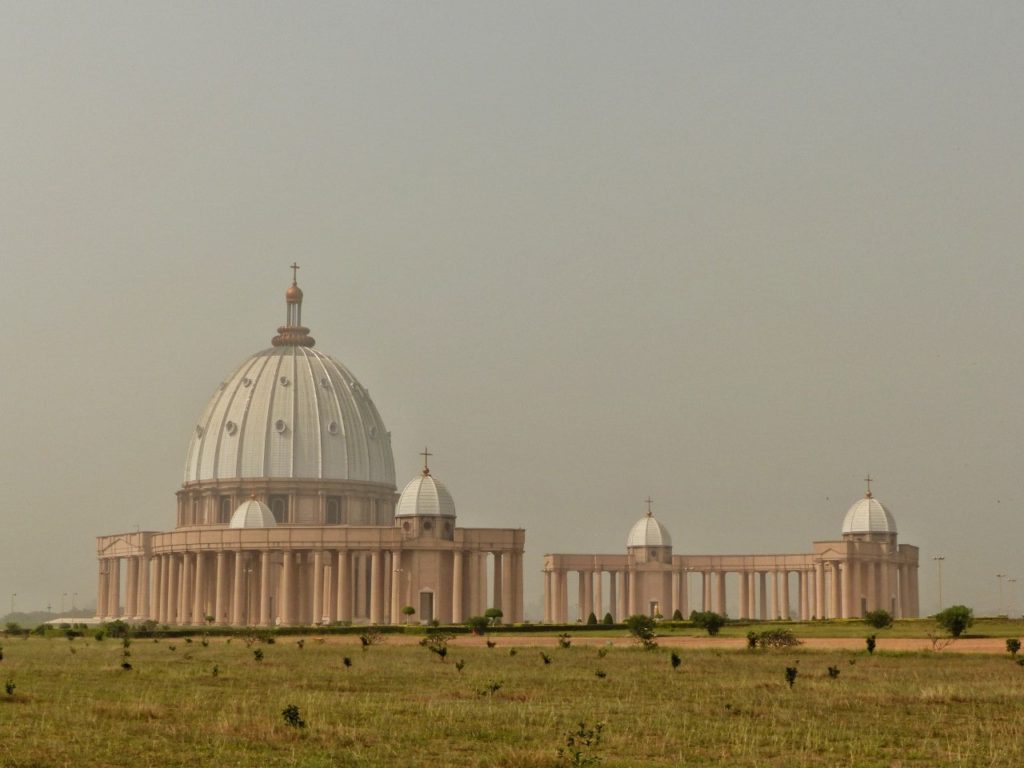
The Basilique de Notre Dame de la Paix on the edge of Yamoussoukro is just one of the unlikely things about this place. Another unlikely thing is that this quiet little city of 200,000 people is the capital of the Ivory Coast, instead of Abidjan. And then there is its cute nickname: Yakro.
We’d had a good time in Man, and despite our lack of success in arranging anything else there, we’d managed at the very least to get bus tickets for Yakro and leave early one morning.
At the station I fought my way aboard the bus to grab seats while Oyv loaded the backpacks on. Our tickets showed seat numbers but we knew better. Sure enough, there was a large basket of eggs and a huge plastic and duct tape bundle in our assigned places. I checked the tickets again to be sure. ‘Madame, the numbers are not respected’ said the man I should have been sitting across from. I desperately lunged for the next two empty seats I saw – after long periods of no activity buses always fill up amazingly fast. Passengers seem to materialise in the aisle like they beamed aboard. (I just watched an episode of Star Trek Voyager: I’ve downloaded a season and brought it with me. It’s for all the endless bus journeys when majestic cathedrals don’t appear on the horizon).
Yakro is easy to get around. For one thing the wide streets are not insanely crowded and there’s actually space for the markets, traffic, pedestrians and livestock to all get along together. It’s also very easy to hop in and out of the share-taxi network: battered cars running in more or less defined loops around the city. You flag one down and assuming he’s going in your direction you hop in with everybody else and their brother (or chicken or goat, as the case may be). Each seat costs 100 – 200 CFAs (20-30 cents USD). It’s like carpooling with strangers you’ve never met and can barely communicate with. Which is a lot better than forced small-talk, if you ask me.
There are plenty of business-type hotels in the capital and we picked one at random. Because one of the receptionists was not openly hostile for a change, I became exceedingly fond of her. It was kind of like I’d developed Stockholm Syndrome; I didn’t dare check out and go anywhere else.
The Basilique de Notre Dame de la Paix pretty much dominates the city’s…erm…skyline.
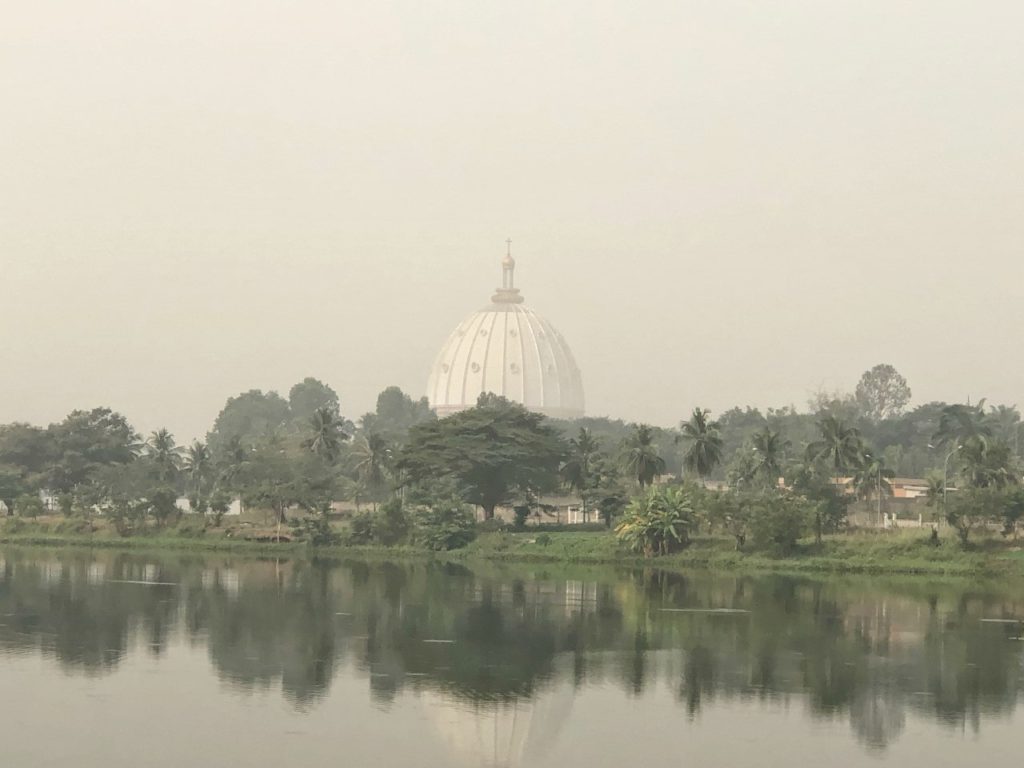
We ate lunch staring at it and then walked over to get a closer look.
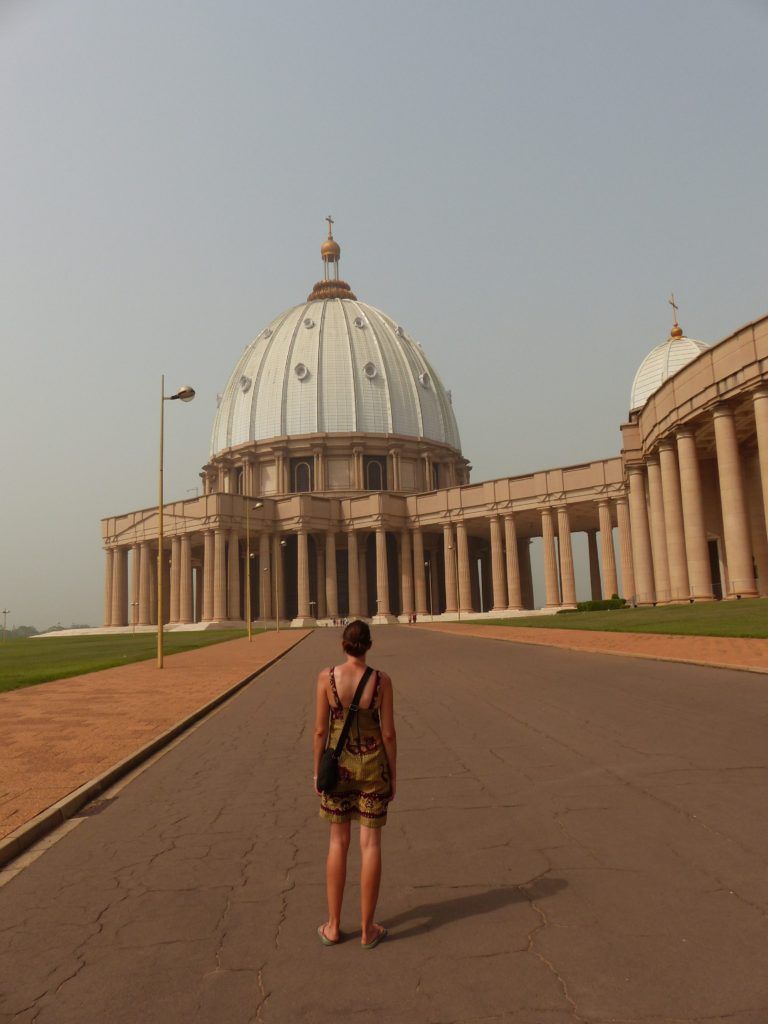
When it was built in 1990 the dome was 20 metres higher than the tallest cathedral in Europe at the time, St. Peter’s Basilica in Rome.
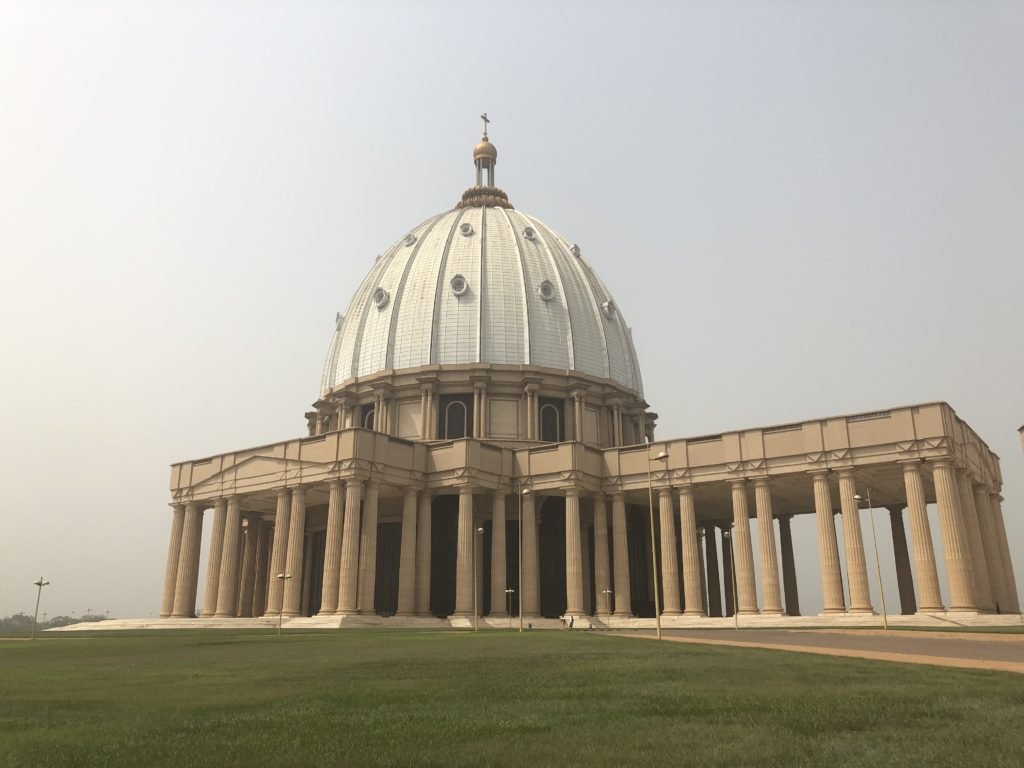
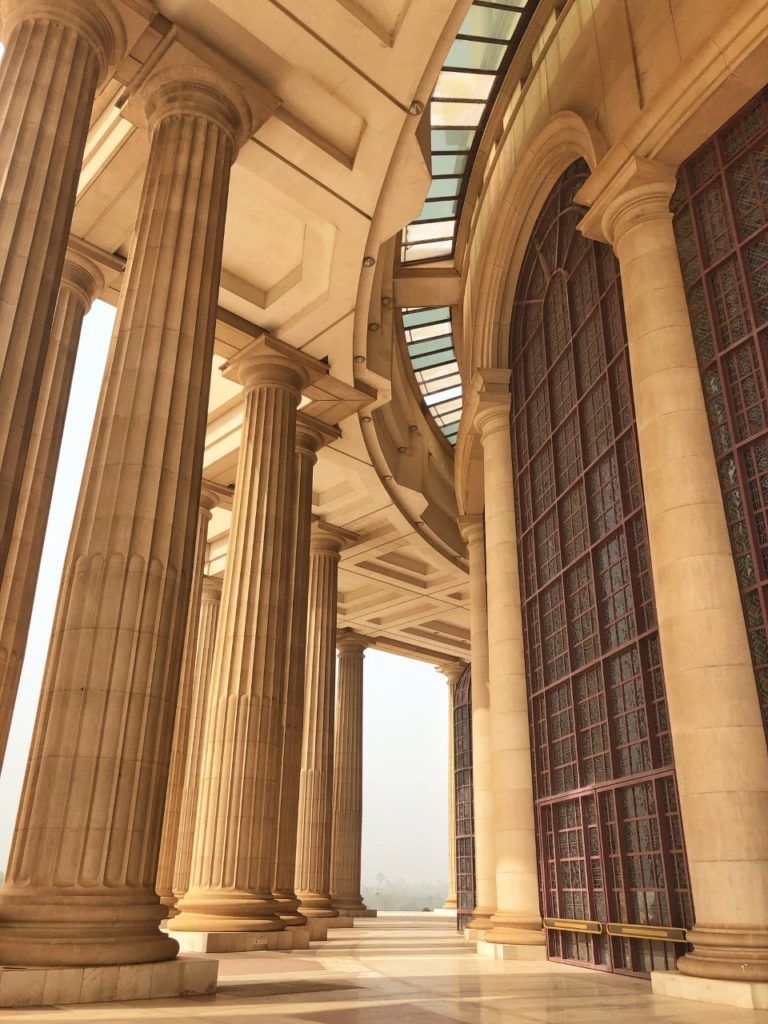
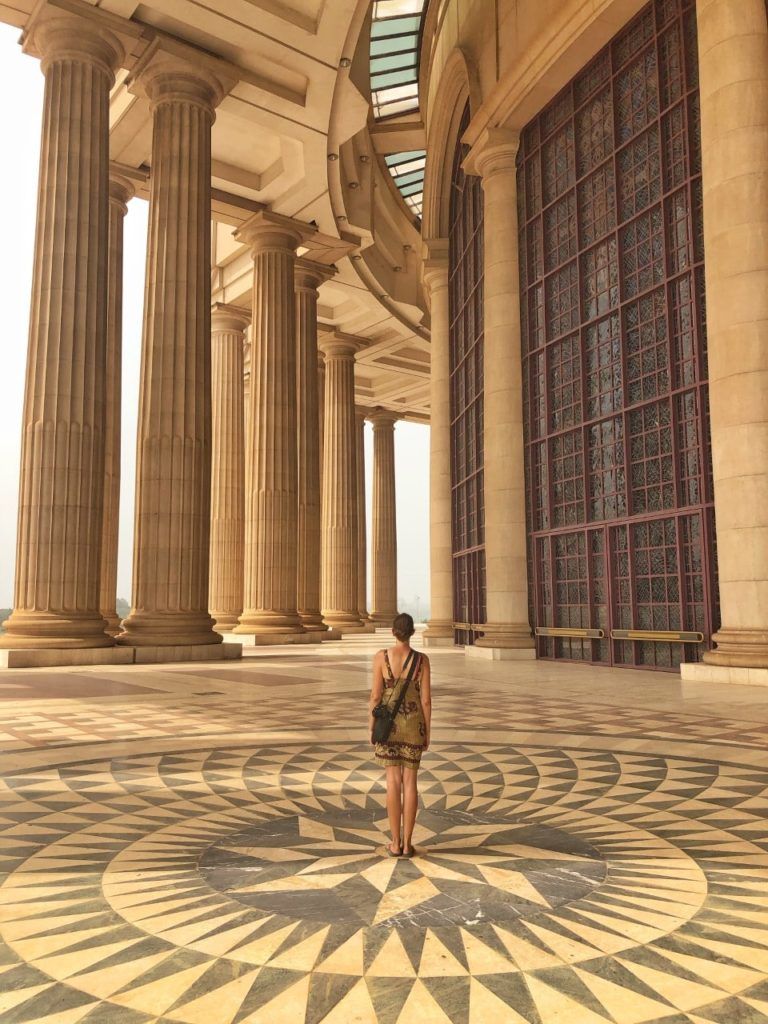
Seating 20 000 people and with more than 7000 square metres of stained glass (plus air conditioners built into every pew) it’s a monument to African Christianity.
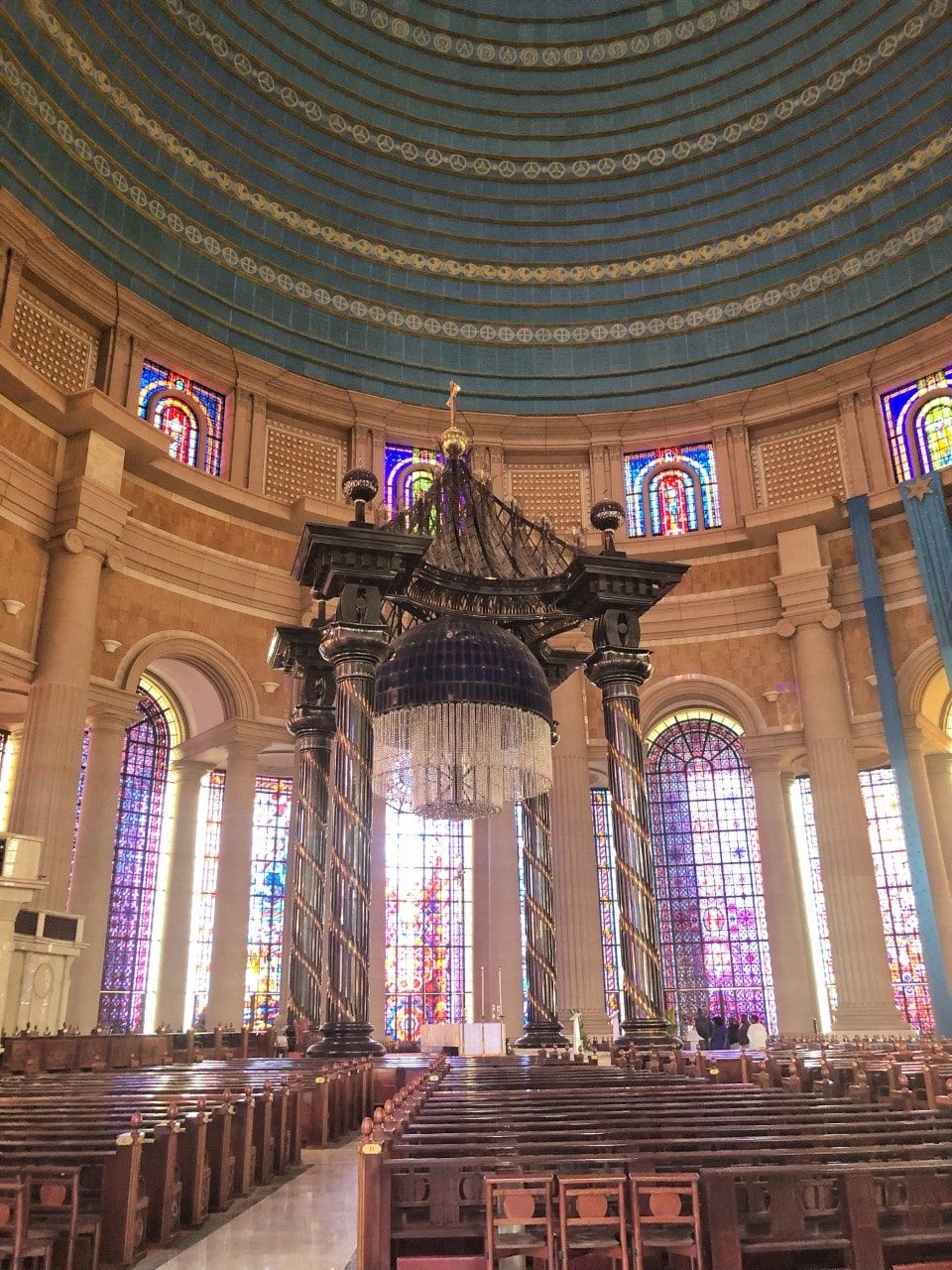
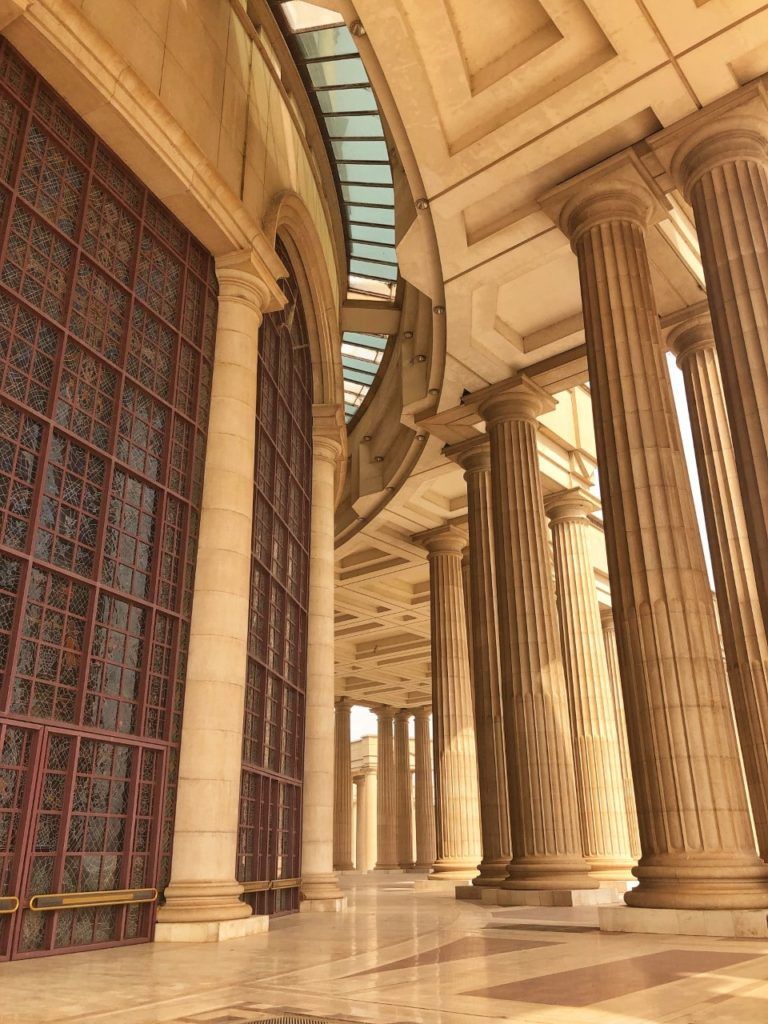
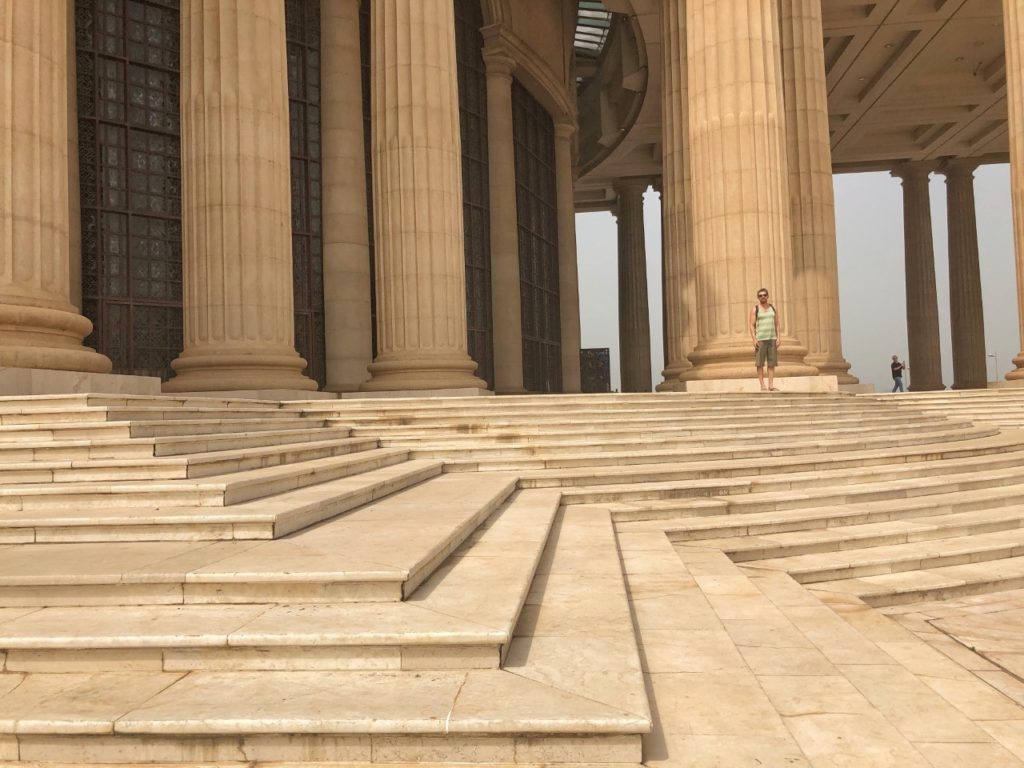
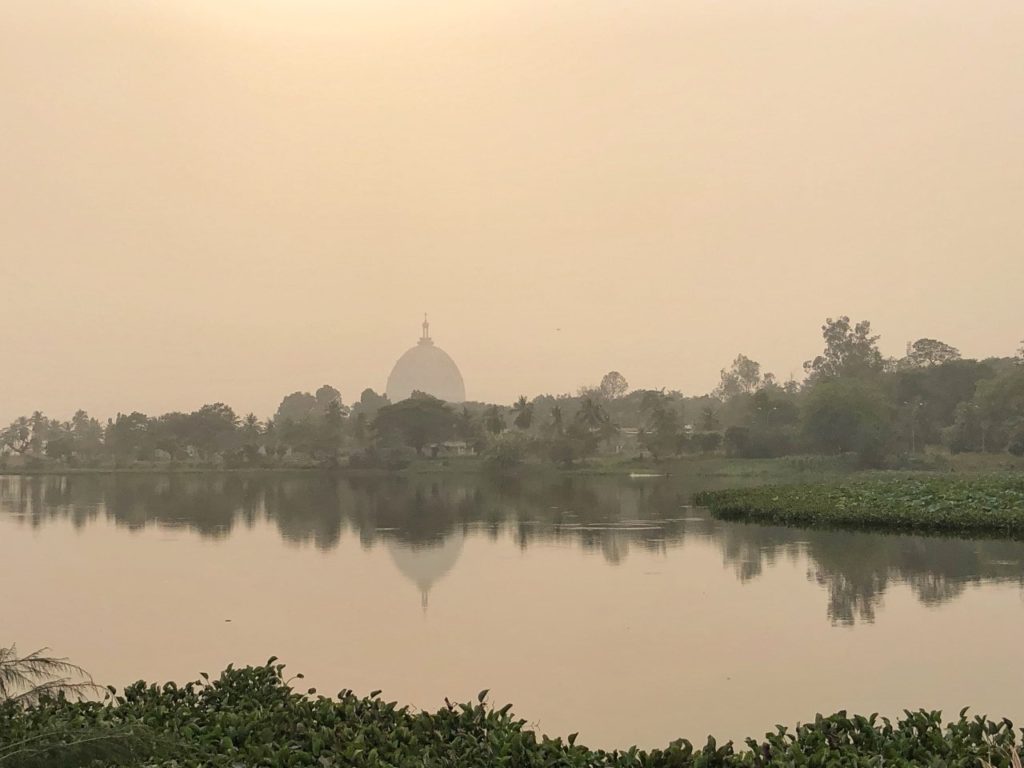
There are plenty of rules and conditions about entering the grounds, but nobody seems bothered about them. Granted, we didn’t try to ride in on horseback smoking pipes, or engage in hand-to-hand combat.
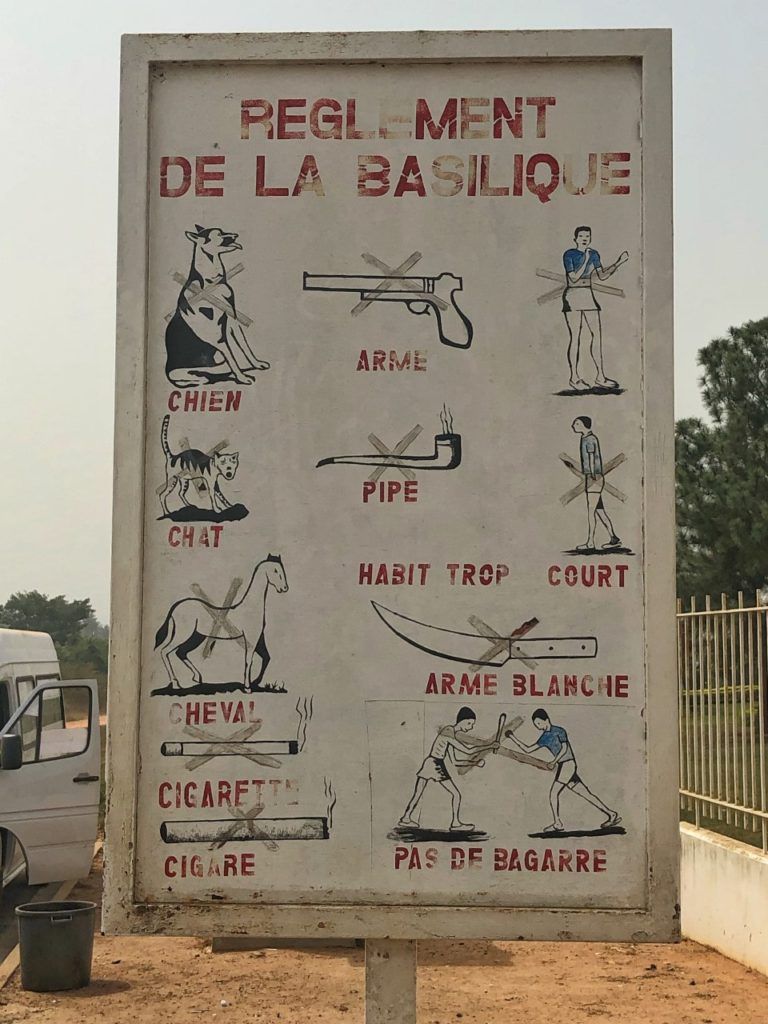
The basilica cost around 300 million USD (in 1990). To us – I think to anyone – that seems an excessive misuse of money desperately needed elsewhere in a country where so many people struggle to get by in poverty.
And there’s yet another unlikely thing about Yamoussoukro: it was once nothing but an obscure village and no one would have ever given it a second thought. Except that as it so happened, Felix Houphouet-Boigny was born here. Yakro’s hometown boy grew up to become the first President of Cote d’Ivoire after the country achieved independence from France in 1960. Today he is still revered by most Ivorians as the Father of the Nation.
During his thirty-plus years in power, Houphouet-Boigny personally converted the village into a modern and vaguely European-styled capital according to his own taste. The President was reticent when it came to the cost of his city-planning activities. When asked about the bill for the basilica he replied ‘When God gives us a gift, it is churlish to ask him how much it cost’.
While he was at it, Houphouet-Boigny commissioned a grand Presidential Palace, and lived there until his death in 1993.
Getting too close to the palace is strictly frowned upon. If you do get too close, a soldier with the sort of personality who’d do well to work at a hotel here will tell you to back off. Photographing it is not allowed either, so you don’t get to see it here.
The palace is off-limits for a couple of reasons:
One, its garden contains a sacred tomb which houses the President’s remains.
And two, the man-made lake in front of the palace contains sacred crocodiles who’ve been known to eat people.
According to local tradition the crocodile is the greatest symbol of power. That’s why Houphouet-Boigny himself selected the lake’s reptilian inhabitants. He even assigned each sacred beast a rank: Commandant, Captain, and so on. Every night, gendarmes would toss live chickens into the jaws of the hungry crocs. But things went downhill in 2012 when a crocodile (the Chief of Cabinet, incidentally) devoured one of the gendarmes instead. They’ve also been known to snap up the odd local who’s climbed over the rail with a selfie-stick for a misguided photo-op. But still, we hoped to see one (a crocodile, not a catastrophe).
Around sunset one day we approached the gate. There was a different gendarme on duty, a nice one who obviously had no future as a hotel receptionist so he joined the military instead. ‘Excusez-moi, les blancs?’ he said politely as we drew close to the waist high guard rail on the edge of the lake. Every day here is a test of my highschool French skills but at least I’m usually just inquiring after things like room rates, breakfast, the cost of a bus ride. However this encounter afforded me the opportunity to craft the following phrase:
‘Sir, the crocodiles, he eats the chicken, no?’
The soldier nodded and beckoned for me to come closer. I’d been fixated on the lake, where I’d seen beady yellow eyes and a long scaly snout glide past in more than one spot. But the soldier pointed to the ground on the other side of the rail and I was startled to see a huge crocodile lying on the pavement there, and then two more further down.
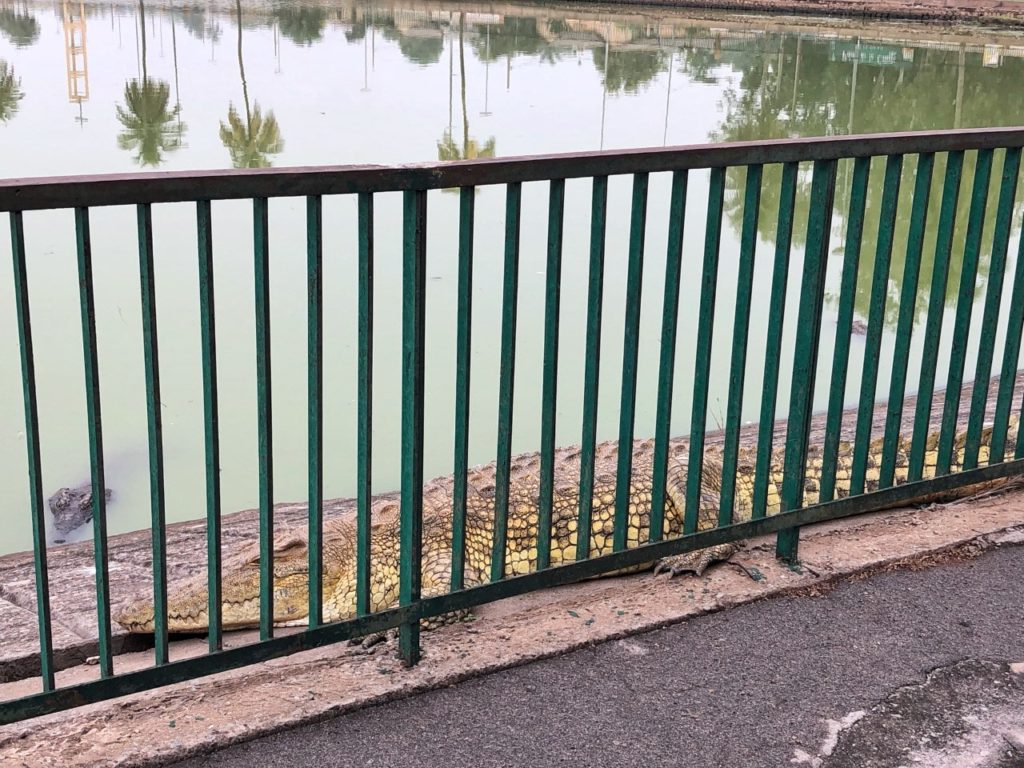
They looked pretty placid and not at all like sacred man-eaters. The friendly soldier suggested we go to the market and buy a chicken – and then he’d let us fling it in. I eat meat, but I’ve seen enough animal suffering here – I didn’t feel a need to be the architect of more.
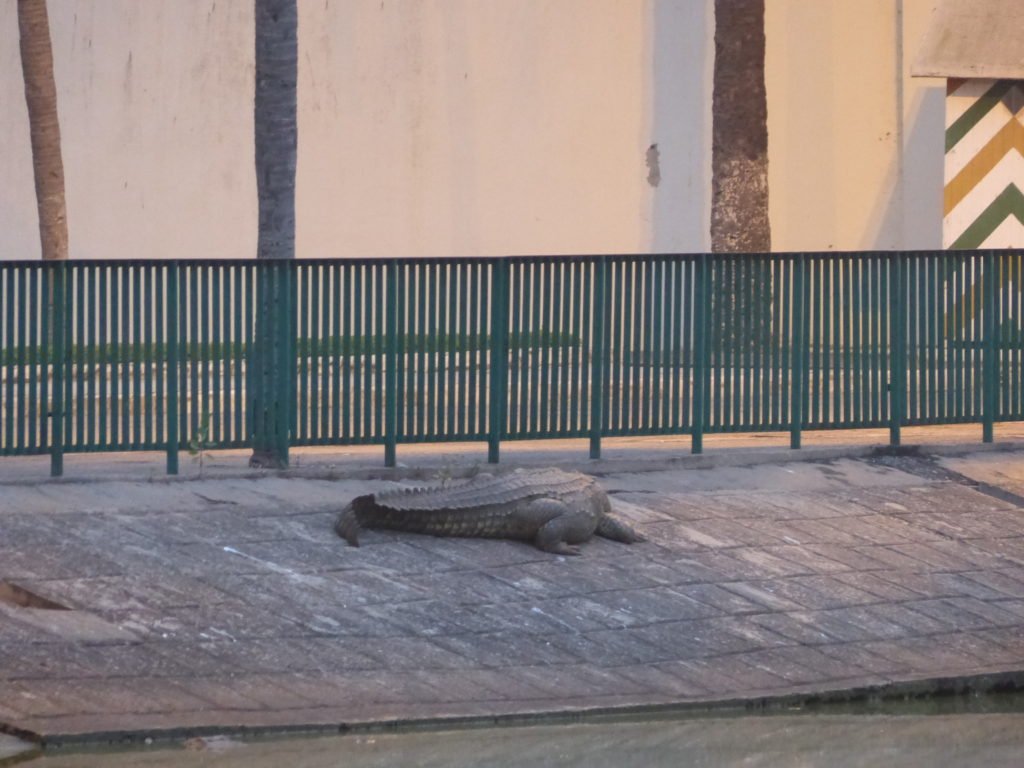
As the city quieted down for the night we went out to eat. The streets were lit and kids were out playing football in the dust. Walking after dark is actually comfortable in Yakro and that’s saying something. We strolled past the market with chickens for sale in towering stacks of little wooden cages. We had fish for dinner – not poultry – exotic stuff like sacred crocodile isn’t on the menu. Saying goodnight to the somewhat friendly receptionist at the hotel we went to bed. Another bus awaited us in the morning and in all likelihood, another strange view.
Read More
For more of our adventures (and misadventures) in Ivory Coast, check out the rest of my stories from the road.
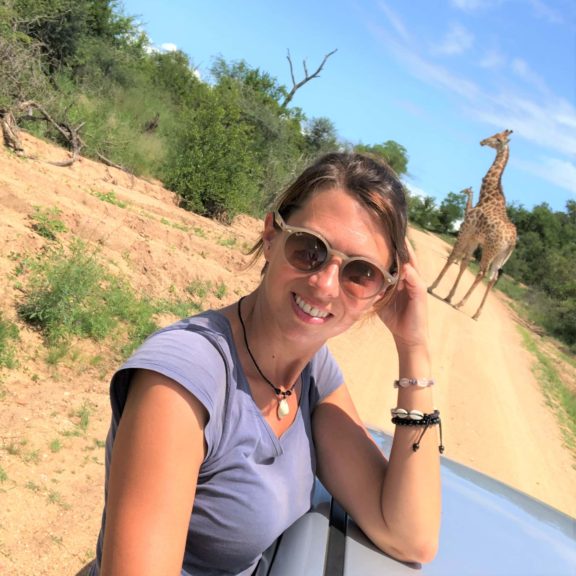
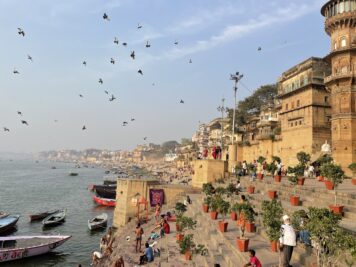
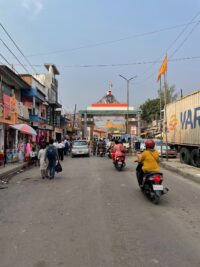
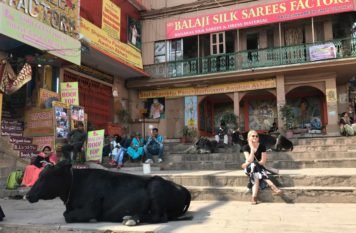
This Post Has 2 Comments
Believe it or not was just reading about this church in LP’s 1000 ultimate sights, they claim it’s the largest church in the world! But ya, so much money, right. We’re loving reading these together as a family. Incredible writing, beautiful pics. Kids got really excited about the dried critters, the frogs and caterpillars, of course. Especially loved pics of you on bike crossing border and you in the market in Man.
I wouldn’t believe it, except it’s you and I think we’ve had a couple of these coincidences before! Thanks, as always, so glad you guys enjoy them. The kids should like the next one then (hint: goats. and more of that soon, now that I think about it).